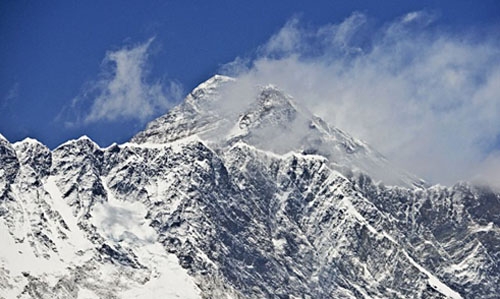Australian and Dutch climbers die after Everest summit
Kathmandu: An Australian and a Dutch mountaineer have died of altitude sickness after summitting Mount Everest, expedition organisers said Saturday, the latest deaths to hit the ongoing Himalayan climbing season.
The Australian climber was on her way down from Camp 4 to Camp 3 when she fell ill and died on Saturday afternoon, Pasang Phurba Sherpa, a board director at Seven Summit Treks, told AFP.
"After reaching the summit yesterday she said she was feeling very weak and suffering from a loss of energy... signs of altitude sickness," Sherpa said.
"She was in her mid-thirties," he added.
The Dutch mountaineer, named as Eric Arnold, also suffered a bout of altitude sickness and died at Camp 4 late Friday while descending the world's highest mountain, according to Seven Summit Treks, which organised both climbers' expeditions.
"(He) was a Dutch mountaineer named Eric Arnold. We got the news from his team leader, Arnold Coster, at base camp," Sherpa said.
Arnold, 35, on Friday posted a picture on his Twitter account saying he had summitted the 8,850-metre (29,035-foot) high peak on his fifth attempt. Last year, he was among the climbers caught in a deadly avalanche on Everest base camp following a massive earthquake.
The Dutch news agency ANP reported that Arnold had told his teammates after returning from the summit "my body has no energy left" adding he had apparently died in his sleep.
Around 330 climbers have successfully scaled Mount Everest this season after two consecutive years of deadly disasters, but two other mountaineers have died in the past few days.
A Nepali sherpa guide perished Thursday after he slipped and fell 2,000 metres down Mount Lhotse, the world's fourth-highest peak.
On the same day an Indian climber died after falling ill while descending fromMount Dhaulagiri, also in the Himalayas.
- 'Top of the world' -
A second Dutch climber, Niels van Buren, also scaled Everest on Friday to become the first patient suffering with multiple sclerosis (MS) to reach the top "after an intense journey of two months," his organisers Mission Summit said.
Van Buren, 37, has been in intensive training for three years for the ascent, which he hoped would raise awareness of MS and money for research into the disease.
"It all feels a little unreal," Van Buren said in a statement posted on the Mission Summit website. "...Slowly I come to realize that I stood on top of the world."
Nepal issued 289 permits to foreign mountaineers for this year's brief spring climbing season, which runs from mid-April to the end of May, after two consecutive failed seasons.
Hundreds of climbers fled Everest last year after an earthquake-triggered avalanche at base camp killed 18 people.
Only one climber summited the mountain in 2014 after an avalanche killed 16 Nepali guides that year.
Since the first summit of Everest in 1953, more than 300 people, most of them Nepali, have died on Everest and Lhotse, which share the same route until Camp 3 at 7,200 metres.
Mountaineering is a major revenue-earner for the impoverished Himalayan nation but last year's earthquake, which killed almost 9,000 people, threatened the future of the country's climbing and trekking industry.
Related Posts

